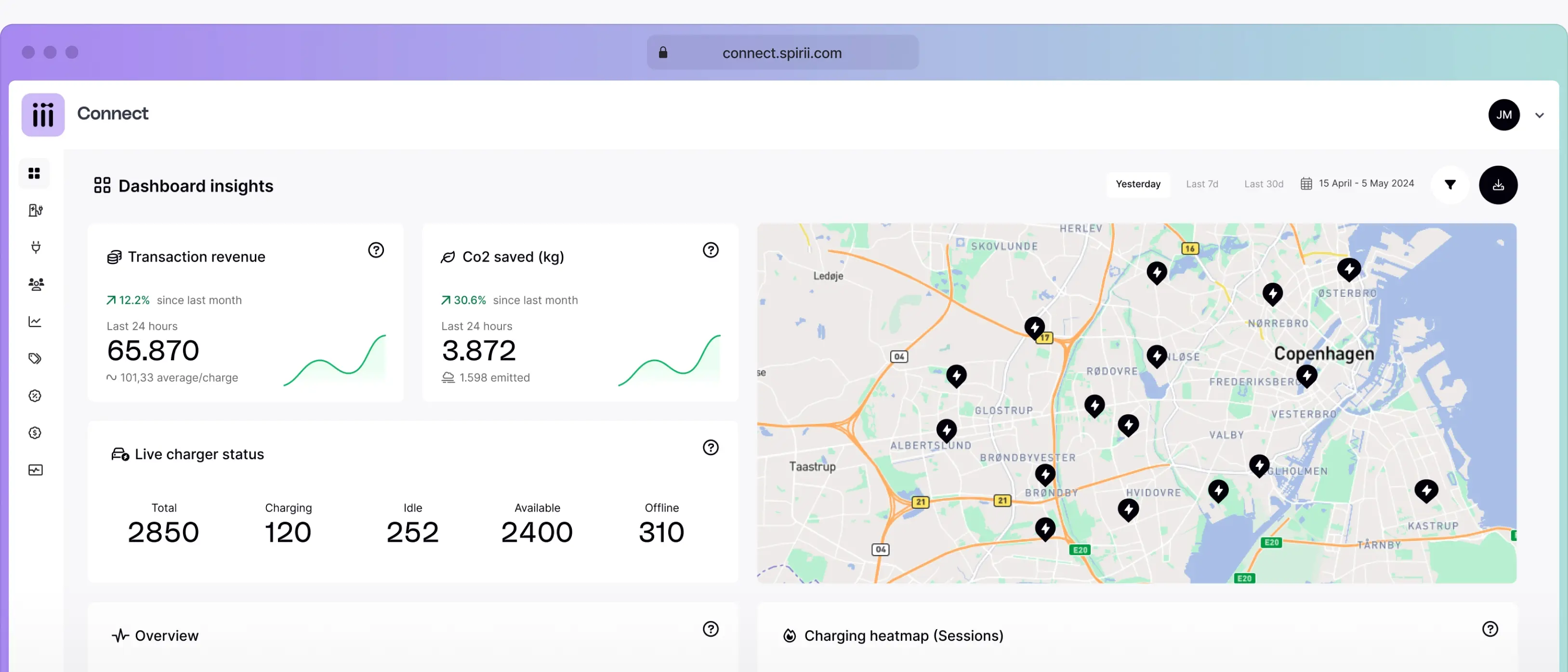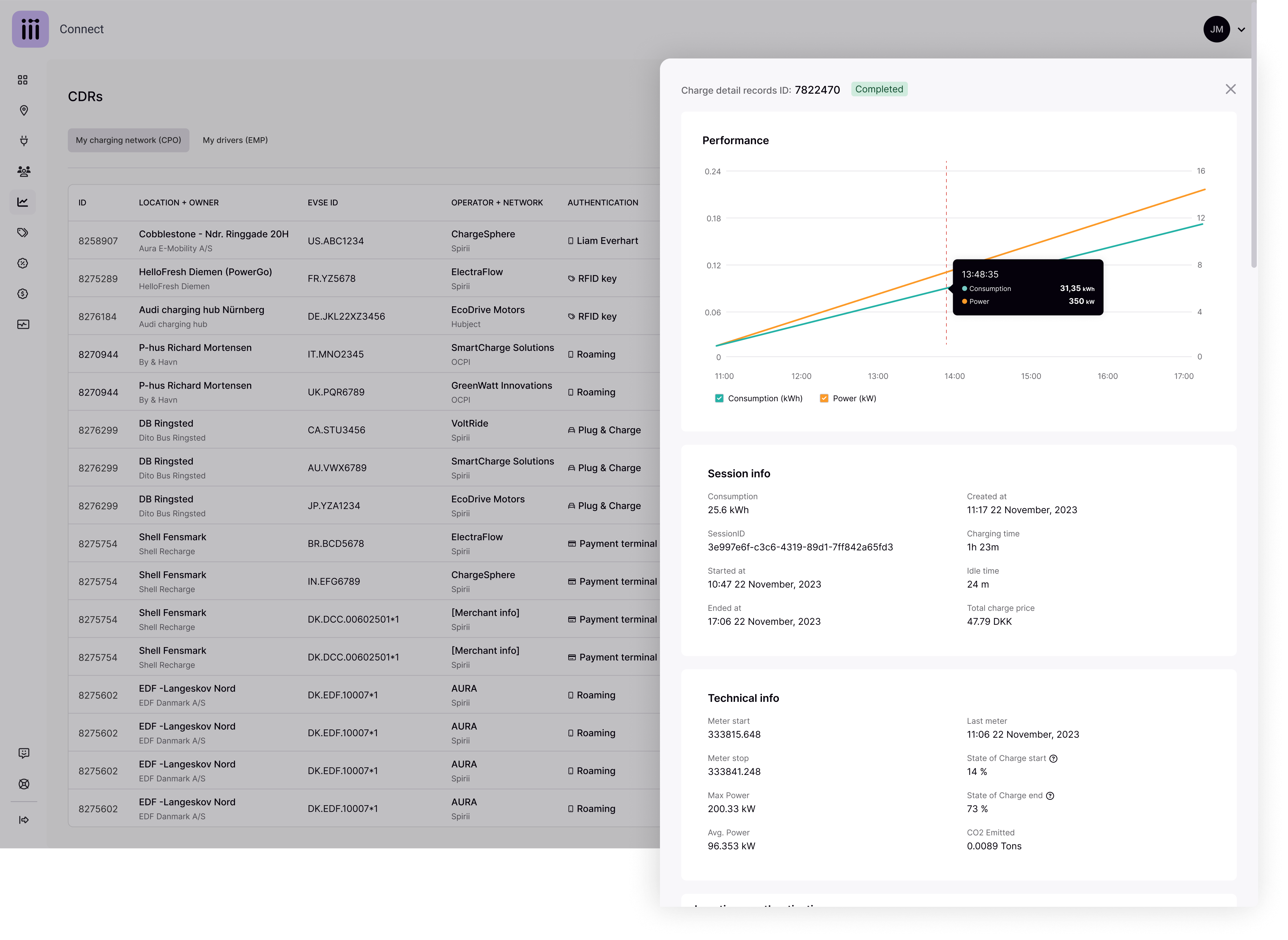home
work
Building a Charge point platform from scratch
2021 - present

The story
The creative challenge
When I joined the eMobility space, I walked into three separate systems that needed to work as one. The tricky part? We were designing for an industry that was still finding its feet.User research was almost non-existent, so we couldn't really validate our ideas. Standards were changing constantly, and feature requests kept shifting as the industry exploded. The usual design process just didn't fit.
As the sole designer for the first few years, I had to prioritize functionality over perfection – MVP mindset over polished experiences. Without established design systems, I was creating interaction patterns from scratch for features that didn't exist elsewhere.
It felt like iterating in real-time while the train was already moving.
Making It Work
Those three disconnected systems gradually became one unified charge point management platform through lots of prototyping and constant tweaking. Every limitation pushed us to get creative, every user problem taught us something, and each solution helped shape what this kind of platform could be.
What I'd do differently
Looking back, I'm not thrilled about some of the compromises we made. If I could do it over, I'd build a solid design system and component library right from the start – it would've made everything smoother and faster. But with limited resources and tight deadlines, we had to choose between ideal and good enough.
Fast forward to now
Now we have a full design team. User-centered design is at the heart of what we do, and actual user research drives our decisions. We're finally building those design systems and running proper design sprints. It's pretty cool to see how far we've come from those early "figure it out as you go" days. Today the platform manages over 50,000 charge points and serves more than 1,200 customers.





Next case
Prev case
Copyright © 2009 - 2025 | Dennis B Johansen, designerlab.dk | All rights reserved.
home
work
Building a Charge point platform from scratch
2021 - present

The story
The creative challenge
When I joined the eMobility space, I walked into three separate systems that needed to work as one. The tricky part? We were designing for an industry that was still finding its feet.User research was almost non-existent, so we couldn't really validate our ideas. Standards were changing constantly, and feature requests kept shifting as the industry exploded. The usual design process just didn't fit.
As the sole designer for the first few years, I had to prioritize functionality over perfection – MVP mindset over polished experiences. Without established design systems, I was creating interaction patterns from scratch for features that didn't exist elsewhere.
It felt like iterating in real-time while the train was already moving.
Making It Work
Those three disconnected systems gradually became one unified charge point management platform through lots of prototyping and constant tweaking. Every limitation pushed us to get creative, every user problem taught us something, and each solution helped shape what this kind of platform could be.
What I'd do differently
Looking back, I'm not thrilled about some of the compromises we made. If I could do it over, I'd build a solid design system and component library right from the start – it would've made everything smoother and faster. But with limited resources and tight deadlines, we had to choose between ideal and good enough.
Fast forward to now
Now we have a full design team. User-centered design is at the heart of what we do, and actual user research drives our decisions. We're finally building those design systems and running proper design sprints. It's pretty cool to see how far we've come from those early "figure it out as you go" days. Today the platform manages over 50,000 charge points and serves more than 1,200 customers.





Prev case
Next case
Copyright © 2009 - 2025 | Dennis B Johansen, designerlab.dk | All rights reserved.
home
work
Building a Charge point platform from scratch
2021 - present

The story
The creative challenge
When I joined the eMobility space, I walked into three separate systems that needed to work as one. The tricky part? We were designing for an industry that was still finding its feet.User research was almost non-existent, so we couldn't really validate our ideas. Standards were changing constantly, and feature requests kept shifting as the industry exploded. The usual design process just didn't fit.
As the only designer for the first couple of years, I had to focus on making things work rather than making them perfect. There were no design systems to lean on, so I was figuring out interaction patterns for features that didn't exist anywhere else. It felt like building the plane while flying it.
Making It Work
Those three disconnected systems gradually became one unified charge point management platform through lots of prototyping and constant tweaking. Every limitation pushed us to get creative, every user problem taught us something, and each solution helped shape what this kind of platform could be.
What I'd do differently
Looking back, I'm not thrilled about some of the compromises we made. If I could do it over, I'd build a solid design system and component library right from the start – it would've made everything smoother and faster. But with limited resources and tight deadlines, we had to choose between ideal and good enough.
Fast forward to now
Now we have a full design team. User-centered design is at the heart of what we do, and actual user research drives our decisions. We're finally building those design systems and running proper design sprints. It's pretty cool to see how far we've come from those early "figure it out as you go" days. Today the platform manages over 50,000 charge points and serves more than 1,200 customers.




Prev case
Next case
Copyright © 2009 - 2025 | Dennis B Johansen, designerlab.dk | All rights reserved.